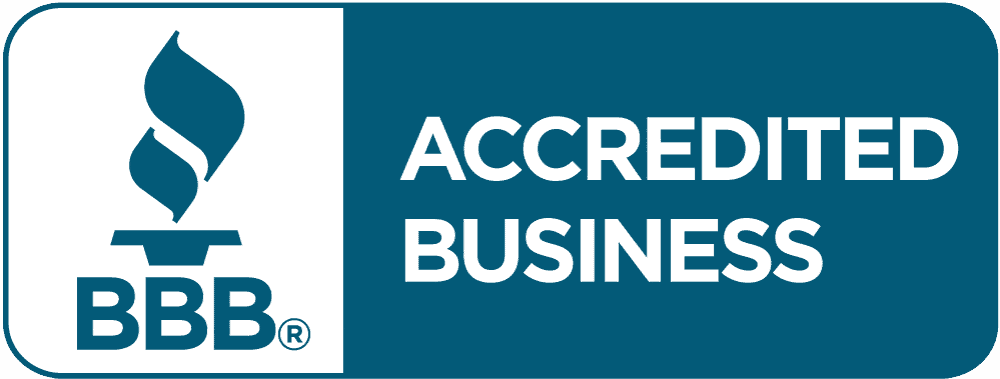SOLAR FAQ
YOUR SOLAR PV QUESTIONS ANSWERED
BY THE SOLAR PROFESSIONALS OF RHINO RENEWABLES
About Solar Rebates & Tax Credit
What are the solar incentives in North Carolina?
- The Federal ITC Solar Tax Credit
- The Duke Power PowerPair Rebate Program
- The Duke Power PowerPair plus Energy Wise Power Manager Battery Control Program
- The REAP Program (Rural Energy for America Program)
- MACRS (Modified Accelerated Cost Recovery System) – Accelerated Depreciation
What is the Duke PowerPair program and how does it work?
The Duke Energy PowerPair program is an initiative in North Carolina aimed at encouraging homeowners to install solar panels along with battery storage systems. Duke offers up to $9,000 in incentives to offset installation costs depending on your selected system size and battery capacity.
- $0.36/watt-AC for solar panel installation up to 10 kW-AC
- $400/kWh for battery storage installation up to 13.5 kWh
Homeowners can then choose between 2 options. Both options require a reliable internet connection and permission for Duke to access and use all data associated with the systems operation.
- PowerPair – Allows you to keep full control of your battery system and receive the cash rebate. If you choose this option, you will be billed through a TOU (Time Of Use) rate structure, also referred to as the Residential Solar Choice rider.
- PowerPair + Power Manager Battery Control – Allows you to receive the cash rebate plus a monthly credit per your battery capacity.
If you opt for the Duke Power Manager Battery Control, you will be enrolled in the Net Metering Bridge rider. With this option, Duke has access to discharge your battery to 20% state of charge up to 36 times per year.
Check out this link to the Duke webpage for more info – Duke Energy Solar + Battery Incentives
What is the 30% Federal ITC solar tax credit and how does it work?
The Federal ITC solar tax credit is a guaranteed federal tax credit program for solar PV and Battery Storage Technology, as well as other renewable energy projects. The program has recently been extended to the year 2032 and is available to residential, commercial entities as a tax credit, as well as non-profit entities as a cash rebate. This incentive is calculated at 30% of the total system cost with no limit on system cost. There are additional tax credit adders (10% per requirement) for people in disadvantaged communities including:
1. 10% Low-income areas (see link for eligible areas) – Low-Income Eligibility Map
2. 10% Energy Community (Fossil Fuel affected areas) – Energy Community Eligibility Map
3. 10% Commercial systems built with American made products.
Through this program, clients who purchase a solar PV system will be guaranteed a federal tax credit based on the cost they pay for their solar system. This tax credit can be spread out over 10 years. We strongly advise clients to seek guidance from a tax professional to find out how the credit can help them.
Check out this link for more information – IRS ITC Residential Clean Energy Credit
What is the REAP Program?
The REAP Program is a USDA initiative that provides financial assistance to agricultural producers and small businesses in rural areas for renewable energy systems, such as solar power, and energy efficiency improvements. This grant covers 50% of the total system cost as a cash rebate and has a loan guarantee option up to 75% of the project cost to help secure project financing.
- Agricultural producers
- An entity directly engaged in production of agricultural products where at least 50% of their gross income comes from agricultural operations.
- Small businesses
- Must be located in eligible rural areas and one of the following:
- Private for-profit entity (sole Proprietorship, Partnership, or Corporation)
- A Cooperative [including those qualified under Section 501(c)(12) of IRS Code]
- An electric utility (including a Tribal or governmental electric utility) that provides service to rural consumers and operates independent of direct government control)
- A Tribal corporation or other Tribal business entities that are chartered under Section 17 of the Indian Reorganization Act (25 USC 477) or have similar structures and relationships with their Tribal entity without regard to the resources of the Tribal government.
- Must meet the Small Business Administration size standards in accordance with 13 CFR 121.
- Must be located in eligible rural areas and one of the following:
Projects must be located in rural areas with populations of 50,000 residents or less.
Check this link for more information – USDA Energy Programs
Check this link to see if your property is eligible – USDA REAP Eligibility Map
What is MACRS?
Owners of qualified solar and energy storage systems are able to depreciate the value of their system over a 5 year period with an 80% bonus depreciation. MACRS can reduce the cost of a solar system by 25%.
Check out this link for more info – IRS MARCS Information
About Solar PV Systems
Can I cover my electricity usage with a solar PV system?
In short, yes. While it is not always possible, or the most cost effective option, it is usually possible to offset the total usage of a home with solar PV energy. Our education based sales team is experienced at analyzing the specific site conditions of your home or business and will advise on the best solution, custom fit to meet your solar goals.
How does Net Metering work with a solar PV system?
Solar Net Metering can be a little bit different depending on a utility company’s policies, but in general it means that any energy production will be returned to the producer on a credit for credit basis. In solar PV system generation, this usually means that any kWh you produce will be directly redeemable as a kWh credit for future use. For example, if your home uses 7,000 kWh per year and has a solar PV system that produces 7,000 kWh per year, you would be able to reduce your monthly bill from kWh to zero. This does have some caveats, so it is important to have a solar professional advise how a net metering program will work with your utility provider, and how it can affect the ROI on your system.
The Duke energy net metering rate structure was terminated as of July 1st, 2023. New solar systems installed in Duke energy territory, are now eligible for the Bridge rate or TOU rate structure. Each utility company and utility Co-Ops may have different rate structures for purchasing back solar power.
Read our blog with more info – Understanding the North Carolina Bridge Rate Structure
What are AC and DC current, how do they differ?
There are two major electrical currents used in our modern world, AC and DC. AC stands for Alternating Current, this is the primary form of electricity that is used around the world in building applications. It has two major iterations in single phase (split phase) and three phase. Homes are constructed with single phase AC and larger businesses are constructed using three phase AC. DC stands for Direct Current, this is not commonly used in building applications. It is however used in Solar PV Modules, commonly referred to as solar panels, as well as batteries among other things. Due to the electrical grid and buildings being built to use AC current, any solar output will need to be inverted from DC current to AC current in order to be used in the building, hence the use of an inverter. Check out below to learn about inverters.
What is a solar PV inverter?
As mentioned above, solar modules, commonly referred to as solar panels, produce DC current. Because building applications are constructed using AC current, any solar DC output will need to be inverted to AC before tying into the electrical system of the building. This is where the inverter comes into play. The inverter is essentially the brain of the solar PV system. The two major types of inverters are string inverters and micro inverters. Both are great options depending on the site specifics and the clients solar goals. Check out below to learn about the difference between the two.
What is a string inverter?
A string style inverter is a single unit that will invert all of a solar PV systems DC current to AC current. In a string inverter, the solar modules are typically connected to each other in series strings. The number of solar panels per string will depend on the Wattage of the panels and the voltage of the system. The number of solar strings will depend on the size of the inverter, the system voltage, and the available string inputs in the inverter. These strings are then routed from the solar array to the inverter, which is generally either mounted on the exterior of the building near the meter, or on the inside of the building near the main service panel. At the solar inverter, the DC current of the modules will be inverted to AC current, and then the outgoing AC current will be connected to the main service panel for the building. String inverters will usually house the solar systems monitoring system, and main solar or DC disconnect. Check out below to learn more about monitoring.
What is a micro inverter?
A micro inverter is a unit that works similarly to a string inverter, but instead of one main unit inverting the solar DC current to AC current, there will be multiple units inverting the current. Micro inverters are typically designed to connect with a single solar panel, so there will usually be a micro inverter for every solar panel in a system. In this system type, the micro inverters will be installed right under the solar modules, either mounting to the solar racking, or to the solar modules themselves. Instead of DC solar strings, the solar array will have AC solar strings. The string sizes will be determined by the micro inverters power output levels, and system design specifications.


